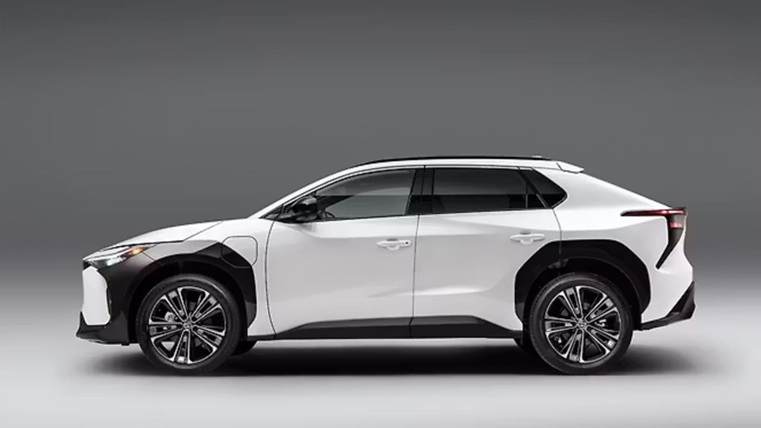Toyota is shifting gears in a big way. The Japanese auto giant just announced it’s diving headfirst into electric vehicle (EV) production in Indonesia this year, aiming to hold its ground against a wave of aggressive Chinese competitors. This move marks Indonesia as the third country where Toyota will build EVs, joining the ranks of China and Japan. And that’s not all – by the end of 2025, they’ll be cranking out electric pickup trucks in Thailand too. It’s like Toyota’s saying, “Game on!” in the red-hot EV race.

Indonesia’s car market is booming, and Toyota’s been the king of the hill with over 30% market share. But lately, Chinese automakers like BYD and others are storming in with sleek, high-tech EVs that are turning heads and grabbing sales. These newcomers are offering advanced features at competitive prices, putting the pressure on established players. Toyota, known more for its reliable hybrids and gas guzzlers, realizes it can’t just sit on the sidelines. “We’ve got to adapt or get left in the dust,” seems to be the vibe.
The timing couldn’t be better, thanks to some smart moves by the Indonesian government. Last year, they rolled out a bunch of incentives to supercharge local EV production and attract big brands. We’re talking about slashing the value-added tax (VAT) down to a measly 1% for EVs that are at least 40% made in Indonesia. If a car doesn’t hit that local content mark, it gets slapped with an 11% VAT – ouch! Plus, companies committing to building EVs locally get a free pass on import tariffs and other taxes that were introduced to protect the home turf. It’s basically the government’s way of saying, “Come build here, and we’ll make it worth your while.”
According to a fresh report from Nikkei, Toyota’s first EV off the line in Indonesia will be the bZ4X SUV, hitting production later this year. This all-electric crossover is already a hit in other markets, with its futuristic design, solid range, and Toyota’s legendary reliability. By making it locally, Toyota can slash costs, avoid those pesky taxes, and price it competitively against the Chinese imports. It’s a classic underdog strategy – use your home-field advantage to fight back.
Hiroyuki Ueda, the president director of Toyota-Astra Motor (Toyota’s Indonesian arm), explained it all ties into Toyota’s “multi-pathway strategy.” In plain English, that means they’re not putting all their eggs in one basket. Sure, Toyota’s been a hybrid powerhouse – Ueda even calls them “environmentally friendly vehicles” – but now they’re expanding the menu to include full-on EVs. “We’re giving customers options,” Ueda said, emphasizing how this flexibility will help Toyota stay relevant in a world that’s going green fast.

And let’s not forget the export angle. Toyota Indonesia isn’t just serving the local crowd; it’s a major player on the global stage, shipping vehicles to more than 80 countries. Over the last five years, they’ve handled about 61% of Indonesia’s completely built-up (CBU) vehicle exports. Yeah, that’s a huge chunk! Exports dipped 5% last year amid global slowdowns, but Toyota’s betting on these new EV incentives and government backing to rev things back up. Imagine Indonesian-made bZ4X SUVs zipping off to markets around the world – that’s a win for jobs, the economy, and Toyota’s bottom line.
But wait, there’s more excitement brewing in Thailand. Toyota plans to start building electric pickup trucks there by the end of 2025. Thailand’s another hotspot where Chinese brands, especially BYD, are making serious inroads. Pickups are a staple in Southeast Asia for everything from farming to city hauling, so going electric here could be a game-changer. It’s Toyota’s way of saying, “We’re not just defending our turf; we’re expanding it.”
This whole push reflects a broader shift in the auto industry. Toyota, once cautious about jumping fully into EVs, is now accelerating to catch up with Tesla, BYD, and others leading the charge. Critics have knocked Toyota for being slow on the uptake, sticking to hybrids while the world plugs in. But with moves like this, they’re proving they’ve got the chops to compete. It’s not just about cars; it’s about jobs, innovation, and the future of transportation in emerging markets like Indonesia and Thailand.
For American drivers watching from afar, this could mean more affordable EVs hitting global markets, including ours. Toyota’s already a household name here with models like the Tacoma and RAV4 – imagine electric versions built overseas but tailored for U.S. tastes. Plus, as Chinese EVs face tariffs and scrutiny stateside, Toyota’s diversified production might give them an edge.
In the end, Toyota’s Southeast Asian EV blitz is a bold bet on the future. With Chinese rivals breathing down their necks, it’s do or die. Will this multi-pathway approach pay off? Only time will tell, but one thing’s for sure: the EV revolution is heating up, and Toyota’s ready to rumble.
Related Post
